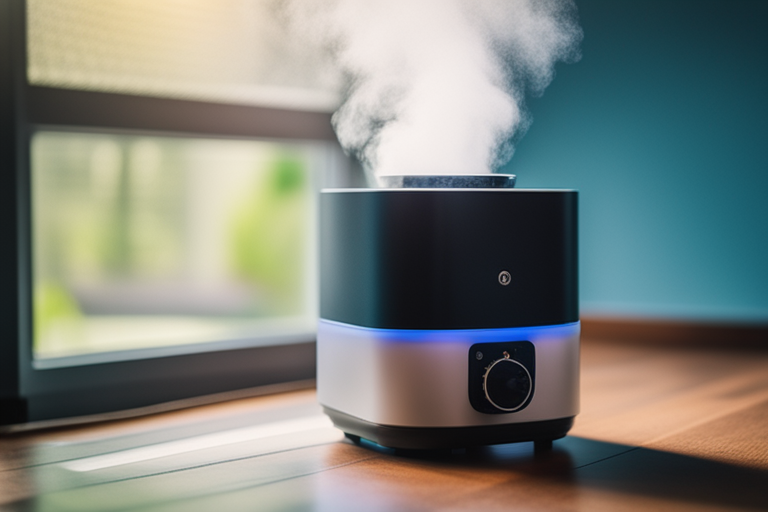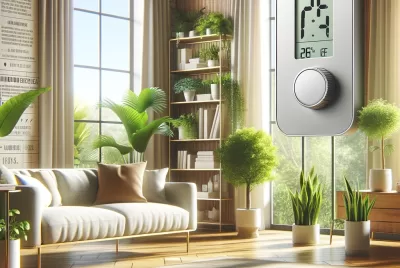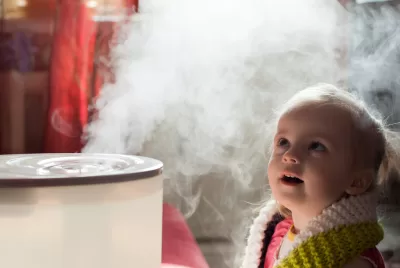How to Clean a Humidifier in 5 Easy Steps: A Beginner’s Guide
"We may earn a commission for purchases made using our links. Please see our disclosure to learn more."
If you live in a dry climate, you may have considered using a humidifier to improve your indoor air quality and reduce dryness in your skin, throat, and nasal passages. But do you know how to clean a humidifier? In this article, we’ll provide a comprehensive guide on how to clean and maintain a humidifier for optimal use.
Why is Cleaning a Humidifier Important?
Cleaning a humidifier is essential to avoid health risks associated with bacteria, mold, and mineral buildup in the appliance. A dirty humidifier can spread germs and allergens in the air, leading to respiratory infections, asthma, and allergies. Moreover, mineral buildup in the water tank can clog the nozzle and reduce the appliance’s efficiency, leading to higher energy bills and a shorter lifespan.

Issue Possible Cause Solution Low mist output Mineral buildup in the nozzle Clean the nozzle with vinegar and water solution Leaks Loose or damaged parts Tighten or replace the affected parts Noise Dirty fan or motor Clean the fan and motor with a soft brush or cloth Foul odor Bacteria or mold growth Clean the water tank and parts with vinegar and water solution or hydrogen peroxide How to Clean a Humidifier
A comprehensive guide on how to clean and maintain a humidifier for optimal use.
– Dirty humidifiers can cause health risks such as allergies and respiratory infections.
– Materials needed to clean a humidifier include white vinegar, water, cleaning brush, and soft cloth.
What Materials Do You Need to Clean a Humidifier?
To clean a humidifier, you’ll need the following materials:
- White vinegar
- Water
- Cleaning brush or toothbrush
- Soft cloth or sponge
You can also use hydrogen peroxide or bleach, but these chemicals can be harsh and should be used with caution. It’s best to stick to vinegar or other natural cleaning solutions to avoid damaging the appliance or breathing in toxic fumes.
How to Clean a Humidifier: Step-by-Step Guide
- Turn off and unplug the humidifier: Ensure that the appliance is turned off and unplugged before cleaning to avoid electrical shocks or damage to the motor.
- Disassemble the parts: Depending on your humidifier model, remove the water tank, filter, nozzle, and tray. Consult your user manual for specific instructions on how to disassemble the humidifier.
- Clean the water tank: Fill the water tank with equal parts of white vinegar and water and let it sit for 30 minutes to dissolve any mineral buildup. Scrub the inside of the tank with a cleaning brush or toothbrush to remove any stubborn stains. Rinse the tank thoroughly with water and wipe it dry with a soft cloth or sponge.
- Clean the other parts: Scrub the filter, nozzle, and tray with the vinegar and water solution using the cleaning brush or toothbrush. For tough mineral buildup, soak the parts in the solution for a few hours before scrubbing. Rinse the parts thoroughly with water and wipe them dry.
- Reassemble the parts: Once you’ve cleaned and dried all the parts, reassemble the humidifier following your user manual’s instructions. Fill the water tank with clean water and turn on the appliance to test if it’s working correctly.

Tips for Regular Maintenance
To maintain a clean and healthy humidifier, clean and disinfect it regularly. The frequency of cleaning depends on the usage and water hardness levels in your area. Generally, it’s recommended to clean a humidifier every three days to one week.
To reduce mineral buildup in the water tank, use distilled water instead of tap water or install a demineralization cartridge in the humidifier. Change the filter regularly, depending on the manufacturer’s instructions.
If you encounter any issues with your humidifier, such as leaks, noise, or low mist output, consult your user manual or contact the manufacturer for troubleshooting tips.
Advice Piece: The Importance of Regular Cleaning
When you first start using a humidifier, you might not realize the significance of cleaning it on a regular basis. Using tap water and neglecting the cleanliness of the tank or filter can lead to unforeseen issues. You may begin to experience allergies and skin irritation, mistakenly attributing these symptoms to changing weather conditions. However, it’s essential to be vigilant and notice any unusual smells emanating from the humidifier, as this could be a sign of a problem.
Taking the time to dismantle and inspect the humidifier can often reveal the underlying issue. You might be surprised to find the water tank laden with hard mineral buildup, and the filter choked with dirt and debris. It’s advisable to clean the components promptly with a vinegar and water solution, removing the accumulated gunk. You’ll likely notice a significant difference once you reassemble and test the humidifier: a stronger, cleaner mist output, and no accompanying smell or irritation.
This experience serves as a valuable lesson on the necessity of regular cleaning and maintenance of your humidifier. Consistent upkeep not only enhances the performance and lifespan of the appliance but also promotes a healthy and comfortable indoor atmosphere. Make it a habit to clean your humidifier weekly, utilizing distilled water to minimize mineral buildup. This small investment of time and effort will undoubtedly reap benefits in the long run, ensuring a more pleasant and healthy living environment.

How to Store a Humidifier
When you’re done using your humidifier for the season, it’s essential to store it properly to prevent mold growth and other damage. Here are some tips for storing a humidifier:
- Empty the water tank and clean it thoroughly with soap and water.
- Let the humidifier air dry completely before storing it in a cool, dry place.
- Remove the filter and discard it if it’s disposable. If it’s reusable, clean and dry it before storing it separately.
- Cover the humidifier with a clean cloth to prevent dust and debris from settling on it.
Conclusion
Cleaning and maintaining a humidifier is crucial for a healthy and comfortable indoor environment. By following the step-by-step guide and tips for regular maintenance, you can ensure that your humidifier functions optimally and lasts for years to come.
Use natural cleaning solutions like vinegar and water and avoid harsh chemicals that can damage the appliance or harm your health. We hope this beginner’s guide has been helpful, and we encourage you to take action to clean your humidifier today for a healthier tomorrow.
Insider Tip: “To make cleaning even easier, try cleaning your humidifier right after use when the mineral buildup hasn’t had time to harden. This will save you time and elbow grease.”
Common Questions
Question: Who needs to clean their humidifier?
Answer: Anyone who uses a humidifier regularly.
Question: What supplies do I need to clean my humidifier?
Answer: White vinegar, water, and a soft-bristled brush.
Question: How often should I clean my humidifier?
Answer: At least once a week to prevent mold and bacteria buildup.
Question: What if my humidifier has stubborn stains?
Answer: Soak the affected parts in a solution of vinegar and water for a few hours.
Question: How do I clean the inside of my humidifier?
Answer: Fill the tank with a mixture of water and vinegar and let it sit for at least 30 minutes, then rinse thoroughly.
Question: What if I don’t clean my humidifier regularly?
Answer: Neglecting to clean your humidifier can lead to the dispersal of harmful bacteria and mold into the air.




